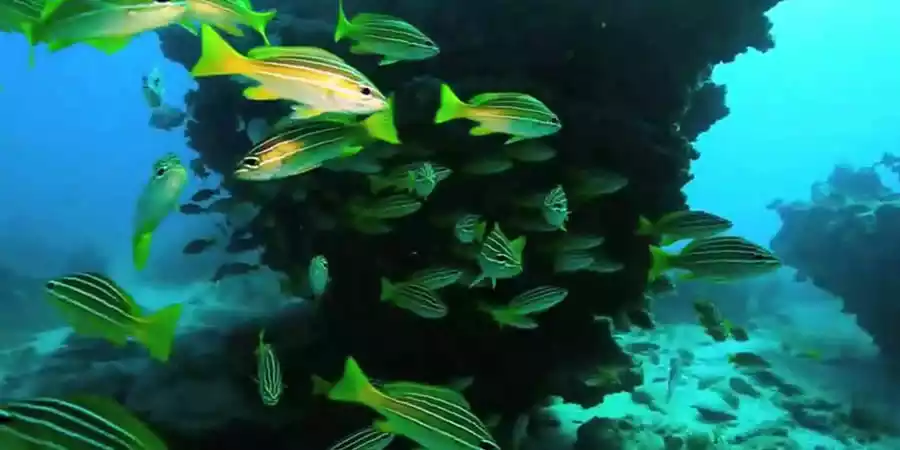
The island of La Graciosa is part of the Marine Reserve of the Chinijo Archipelago (Chinijo is a local demonym that means "small," primarily used to refer to children). With 70,700 hectares, it is the largest marine reserve in Europe and an area of exceptional scenic value. This reserve is located within the municipalities of Teguise and Haría and includes the islets of La Graciosa, Alegranza, Montaña Clara, Roque del Este, Roque del Oeste or Hell, and the cliffs of Famara. It was established in 1995 to ensure the sustainable exploitation of fishing resources. Among other protective measures, all types of marine fishing and extraction of living species are prohibited, although professional fishing for salemas and migratory pelagic species using hook gear and traditional fishing methods of the area is allowed, as well as recreational fishing no less than 2 nautical miles from this designated space.
A key factor in its natural richness is the surrounding marine environment, which, from a biological perspective, is one of the richest and most varied in the Canary Islands. So far, 304 species of macroalgae have been cataloged, representing 53.15% of the total flora of the Canary Archipelago, making it the area of the Islands with the highest index of macroalgal species diversity.
The resources of these waters explain the abundance of seabirds, which find their food base in them. This has led to the park being declared a Special Protection Area for Birds (ZEPA), and it is inherently an area of ecological sensitivity. The most numerous population is that of the Cory’s shearwater (between 7,500 – 10,000 pairs), considered the largest colony in the national territory. Among the rarer and threatened species are the White-bellied storm petrel, owls, the Eleonora’s falcon (Falco Eleonorae), and the Osprey (Pandion haliaetus).
The marine reserve of the Chinijo Archipelago houses a wide variety of marine species, both flora and fauna. Among the most notable species are various cetaceans, such as dolphins and whales, as well as sea turtles and a large variety of fish, crustaceans, and mollusks. Seabirds, such as gulls, cormorants, and shearwaters, can also be found.
Among the most emblematic species of the marine reserve is the angel shark, a shark species that is endangered and has a significant population in the area. The presence of the loggerhead turtle, a threatened species that uses the beaches of the reserve for nesting, is also noteworthy.
Another of the most significant potential values of this Marine Reserve is undoubtedly the historical references to the presence of the Mediterranean monk seal (Monachus monachus). This marine vertebrate, which is currently endangered worldwide, survived thanks to the tranquility and biological richness that these coasts offered, with abundant caves and jameos (natural caves or tunnels) where it took refuge and reproduced. Currently, Alegranza is one of the potential territories for reintroducing populations of this seal, which has been heavily depleted and exploited in the nearby Mauritanian and Mediterranean coasts.
Within this reserve, there is also a maximum protection zone, called the Integral Marine Reserve, which is established within a circular area of one mile radius centered on Roque del Este. In this zone, any type of marine fishing or extraction of living species is prohibited, and access is only allowed for scientific purposes with express authorization from the Fisheries Department of the Government of the Canary Islands.
The marine reserve of the Chinijo Archipelago is an important marine ecosystem with a great diversity of species, many of which are endangered. For this reason, a series of protective and conservation measures have been established to ensure the survival of these species and preserve the natural wealth of the area.